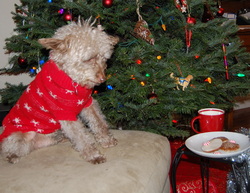
Holidays transform many of us into seasonal entertainers. This time of year, we put a lot of demands on ourselves to cook stunning meals, decorate our homes, and shop for perfect gifts. We also expect our dogs to channel their inner Emily Post and transform into gracious hosts and hostesses.
Not all of our canines are naturally well-mannered entertainers. Your dog may feel that Aunt Millie’s newly knitted scarf is a perfect tug toy and the gingerbread cooling on the counter is a delicious mid-morning snack. Most dogs are not Santa Claus believers, so we need other strategies to convince Rover to be on his best behavior. Training good manners is possible at any age, but it takes time and a bit of practice to learn new skills. Considering all you are juggling right now, here are some time-sensitive suggestions to make sure Rover adds a bit of charm to your holiday celebration.
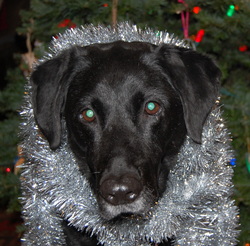
Would you like to welcome guests to your home without a barking chorus? Noisy dogs and our shouts of “quiet” start any party off with an unwanted dose of stress. Take the doorbell out of the equation by securing the lock mechanism with duct tape and hanging a “Welcome, Come In” sign on your door.
An open-door policy will minimize barking but you will need to take steps to prevent Rover from charging out of the front door to greet guests and visit neighbors. Instead of trying to do battle at the door, shut off Rover’s access to the front hallway. A walk-through baby gate placed in your front hallway is a perfect option to keep an open flow for humans while preventing Rover from charging through the door. A few brave souls try to jump a gate, so test your setup before the party.
Creating a dog-free zone at your front door has the added advantage of allowing you to control greetings between your dog and guests. The doorway is the most challenging place for shy or overexcited dogs to meet visitors. Barking or jumping can be minimized by moving greetings to a lower stress place in your home. Even a welcoming and well-mannered mutt can not help with guests. Once your company settles in, they can greet your friendly pooch with the attention that she deserves.

No one wants to spend the party at the emergency vet with a dog who scarfed the baking chocolate or order a pizza after FiFi samples the Christmas ham. Dogs are genetically determined to be on the lookout for food and no other time of year presents a better opportunity for finding forbidden goodies.
- Prep time - Save yourself stress by giving Rover something else to do during your cooking marathon. He can keep the kids company in the family room or play with a new toy on his bed. I enjoy the help of my resident crumb cleaners during every-day cooking, but I want all non-essential hands and paws out of the kitchen when cooking for a crowd.
- Hors d’oeuvres - Most of us do not routinely leave plates of special snacks sitting unattended at dog nose level. So it is not surprising when Roxy helps herself to your fancy cheese board in front of company. The beginning of a party is a busy time for the party host so you will not be able to guard against food thieves. Test out your pup before the party by baiting the coffee table with something delicious and surreptitiously monitoring the table from the other room. If Roxy goes for the goods, plan to put party trays on high tables that she cannot reach.
- A sit down meal is often the highlight of a holiday celebration and another busy time for the host. Have a Kong stuffed and ready to give Rover before you sit down to eat to avoid any embarrassment of a begging dog.
- Leftovers - Your company has left and leftover breads and sweets are all over your counter. Pack leftovers away in air-tight/dog proof containers. If Rover often helps himself to midnight snacks off of your counter, consider asking Santa to bring you a breadbox this year.
- For large gatherings and for dogs that may be extra sensitive or new to crowds, consider designating a primary dog minder. This is the person to remember to take dog out for potty break and keep an eye to make sure she is not getting overwhelmed or stealing food.
- Dogs are part of our families, but luckily do not have a sentimental attachment to our holidays. If you have a fearful dog, it may be the kindest to keep her confined in a safe zone away from the party chaos.
- If you are going to confine your dog to a new room, do a few test runs before the party to make sure she will be calm and quiet. Set aside special rawhide chews or stuffed Kongs to keep her busy during the party.
- A leash can be helpful tool to manage interactions between dog-shy guests or with a rambunctious dog. A leashed dog is still a part of the party but cannot jump on small kids or steal food.
- Establish a new holiday tradition of a post-meal walk. This is a great way for willing guests to enjoy time with your dog and also helps with digestion.
- Make Roxy a central part of the celebration by dressing her up or showing off tricks to your guests.

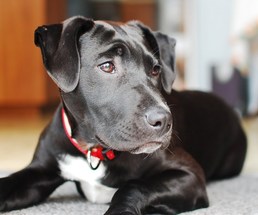
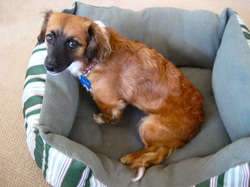
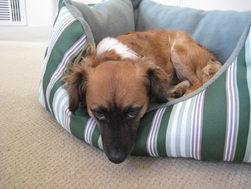
 RSS Feed
RSS Feed